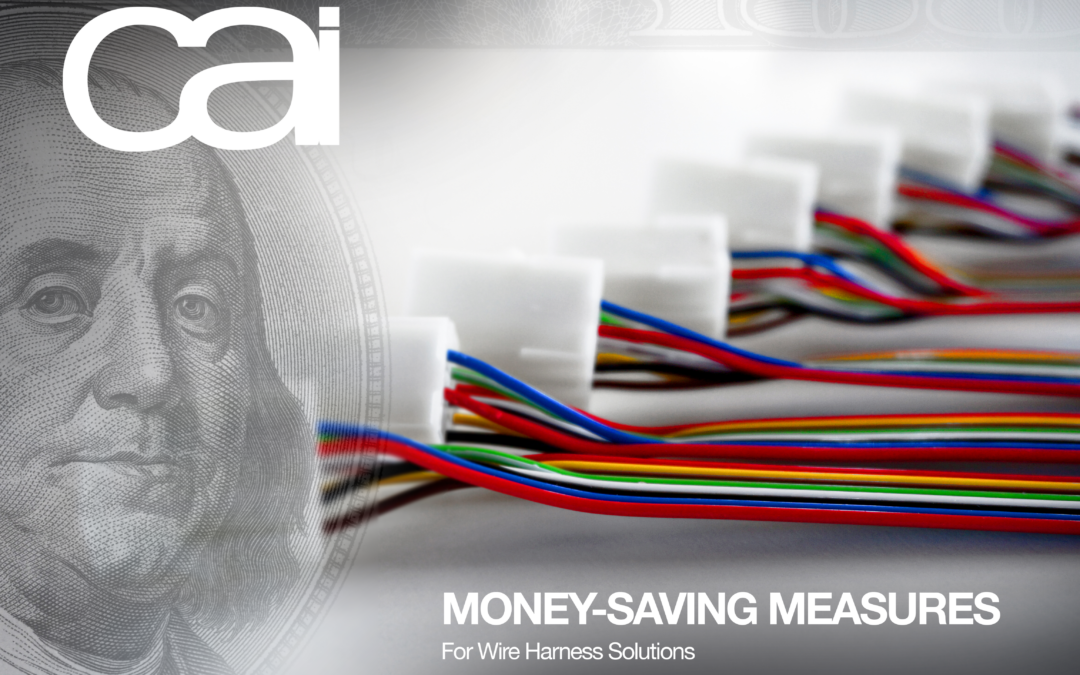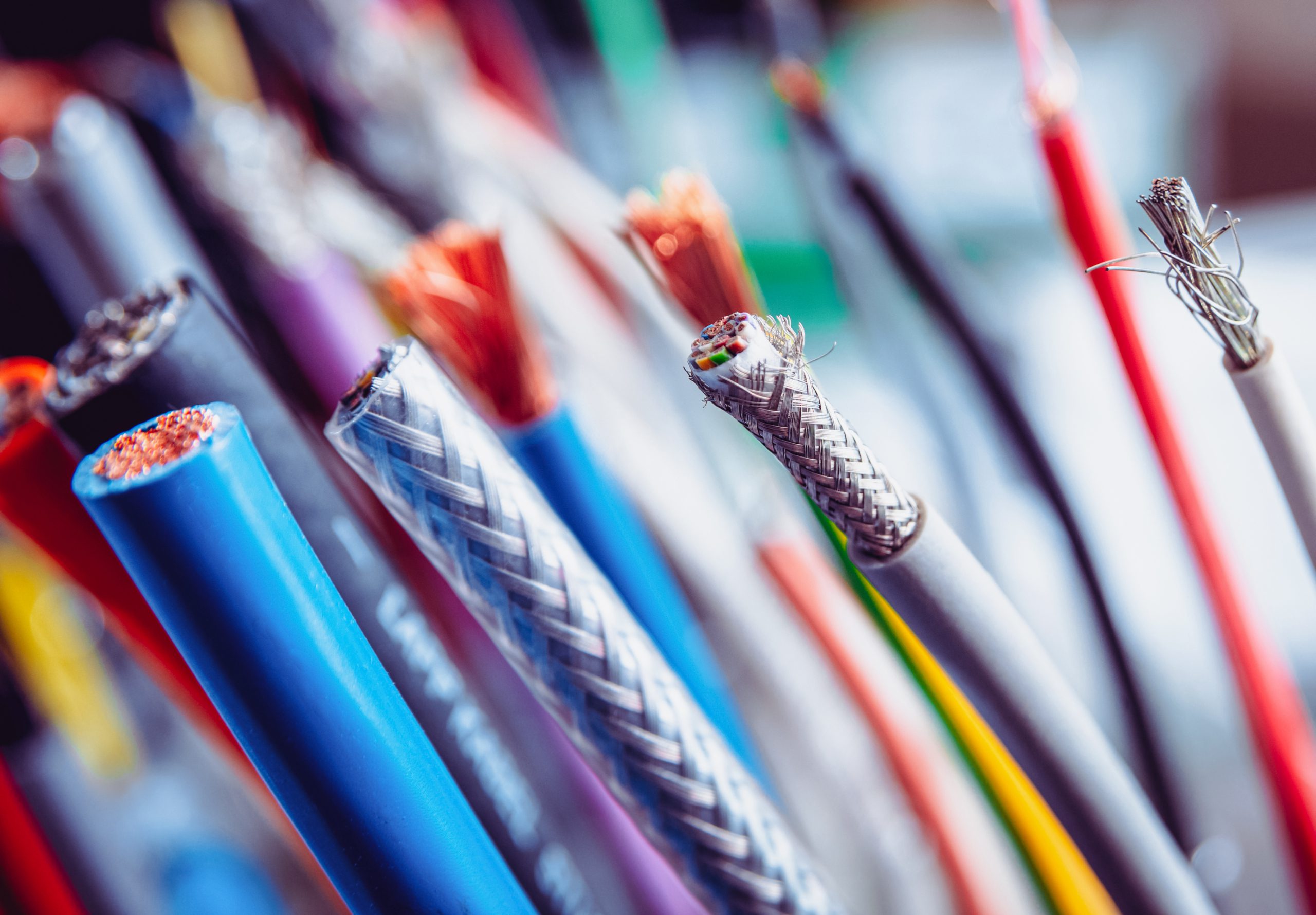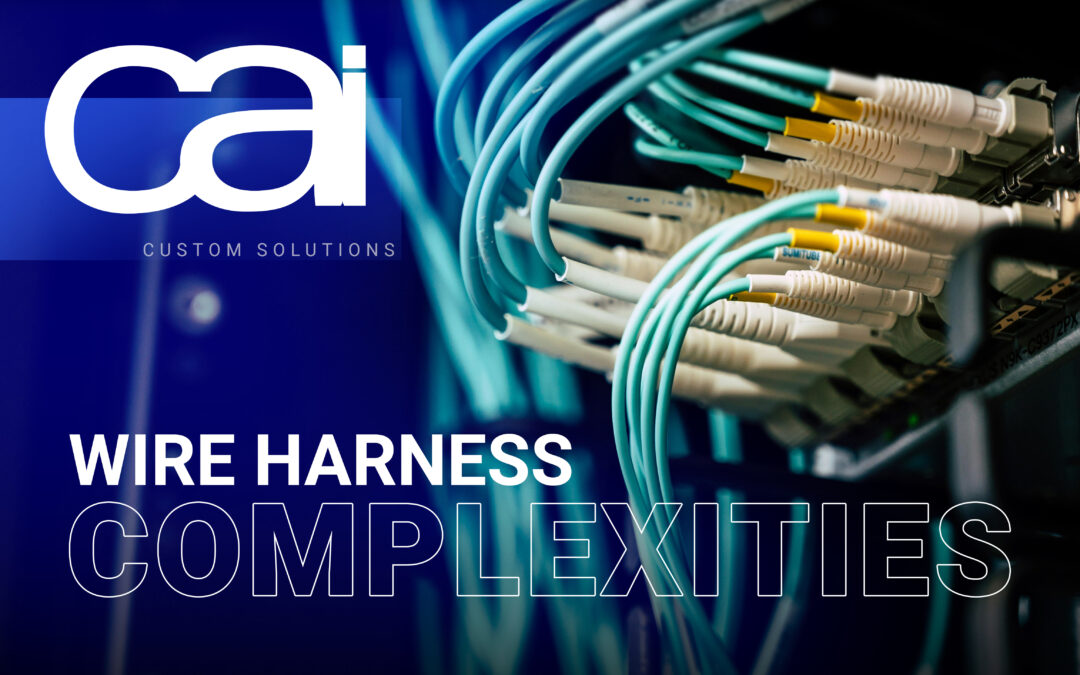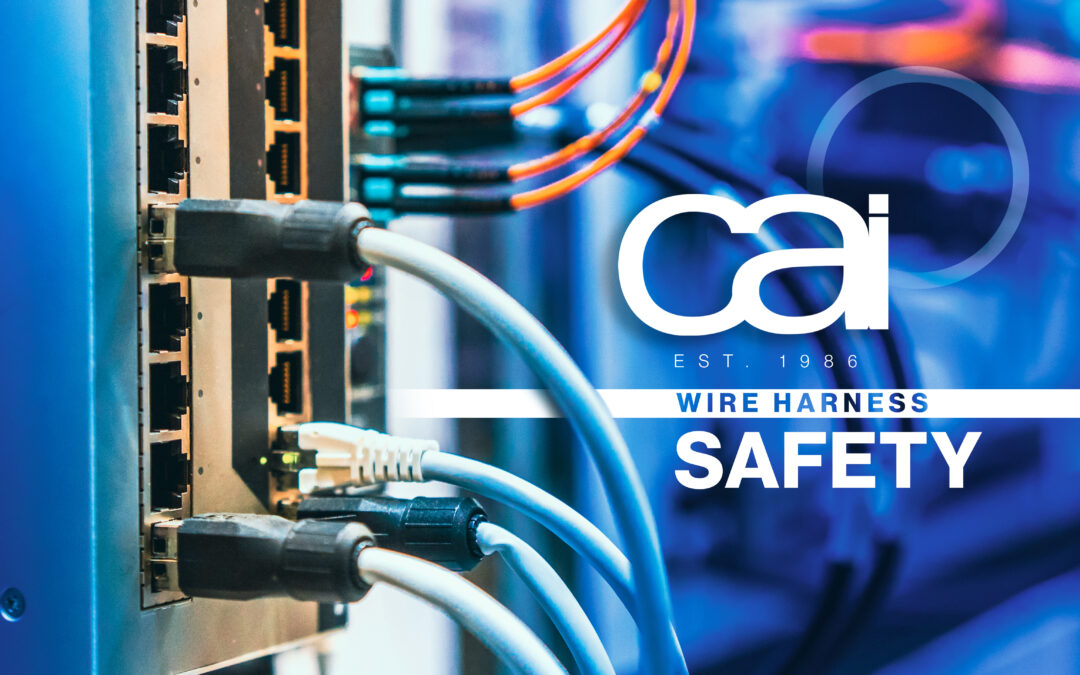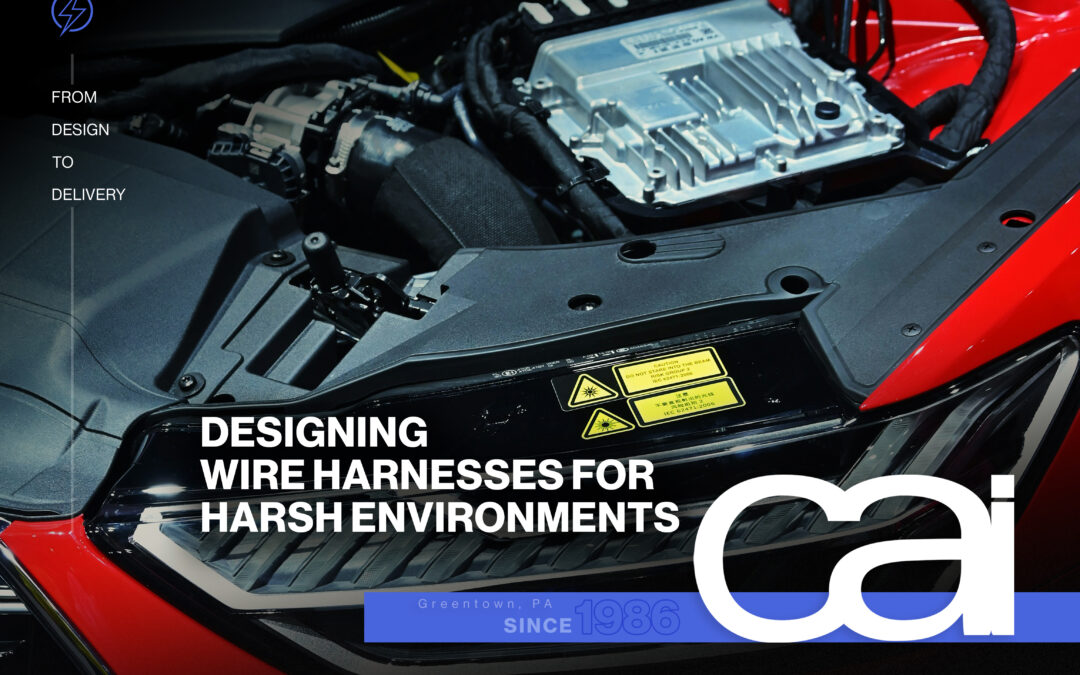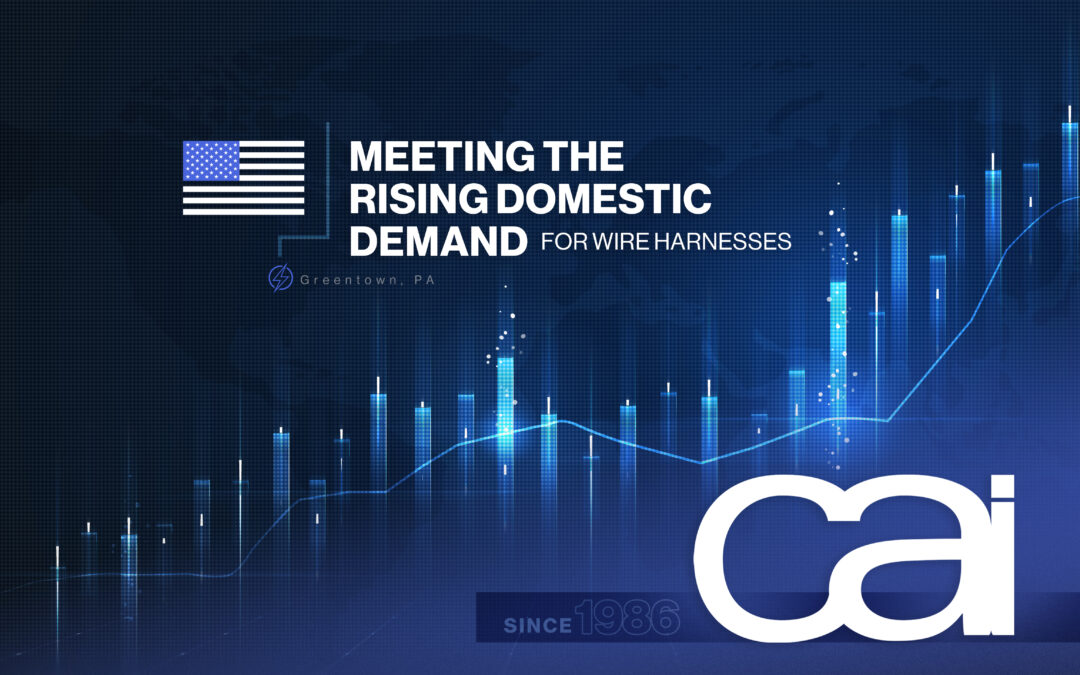Braided, Foil or Spiral: Which Is Best for Your Specific Application?
When manufacturing a cable assembly, it’s important to ensure that the internal conductors and the outside environment are protected from each other. The most effective way to do this is through cable shielding.
Cable shielding wraps the conductor in a common conductive layer to guard against outside interference, particularly electromagnetic/radio frequency interference (EMI/RFI), while also protecting the environment against interference emission. An effective shield is also properly grounded in order to conduct any noise it picks up to the ground.
If assemblies aren’t adequately shielded, interference can lead to poor signal quality, data loss or disruption that causes the electrical device to fail entirely. That’s why it’s essential to not only pick the right shielding but also partner with experienced cable assembly manufacturers like CAI to make sure it’s done right.
When choosing the shielding for your cable assembly, there are a number of key factors to consider, including environmental noise level, types of potential interference, ease of stripping and termination, flexibility, mechanical strength, corrosion resistance and temperature requirements.
Here’s a breakdown of the most common cable shielding types and what each brings to the table so you can find the one best suited for your specific application.
Braided Shielding
The higher material and labor cost of braiding has caused some to shift to newer and more improved alternatives, but braided shielding remains a rugged option. Braiding is accomplished by interweaving small-gauge tinned or bare copper strands in a criss-cross pattern around the insulated center conductor. The degree of protection depends on the angle, number of strands and how tightly the braided formation is woven.
- Typical coverage: 70-95%
- Most effective at low to mid frequencies (up to 100 MHz)
- Core size: .012” and larger
- AWG range: 30-46 AWG
- Flexibility: Good / Flex life (continuous flexing): Good
Pros: Braided shielding offers consistent coverage and excellent mechanical strength as well as greater flexibility, flex life and versatility than foil. Its low resistance path to ground makes it a preferred choice for lower frequencies. It’s also cut through/crush resistant and relatively easy to terminate, particularly when soldering or using a crimp machine.
Cons: The braid pattern prevents total coverage, limiting its effectiveness at higher frequencies, and is not as easy to terminate as foil. Thicker and heavier, braided shields can restrict flexibility, may not be best suited for products or tight spaces, often cost much more, require more time to produce, are heavier and can hamper application serviceability.
Foil Shielding
Typically paired with a tinned copper drain wire to terminate and ground the shield, foil shielding encases a cable with a thin layer of aluminum, or other conductive material, attached to polyester backing for greater resiliency. Taping with a material like Mylar is often incorporated for better protection.
- Typical coverage: 100%
- Most effective at higher frequencies (greater than 100MHz)
- Core size: .025” and larger
- Flexibility: Poor / Flex life (continuous flexing): Poor
Pros: Foil’s greatest advantage is its 100% coverage which gives it a broader frequency range and makes it ideal for high frequency settings. Foil is lighter, less expensive, quicker to produce and easier to terminate than braided. It’s also compatible with other materials for better customization and protection.
Cons: High resistance makes foil less effective at lower frequencies. Making it harder to work with and apply connectors, its thinness also contributes to poorer flex life and less mechanical strength which is why foil isn’t recommended for continuous high-flex applications.
Spiral Shielding
Commonly used with audio equipment like microphones and speaker cables, spiral shielding — also called serve shielding — is similar to braided shielding but wraps the conductor or cable core with single strands of copper wire in a spiral pattern rather than a woven one.
- Typical coverage: 95-98%
- Most effective at low frequencies (up to 1 MHz)
- Core size: .004” – .450”
- AWG range: 36-52 AWG
- Flexibility: Very good / Flex life (continuous flexing): Poor
Pros: Extremely flexible and resistant to kinking and pulling, spiral shielded cable is also lighter than braided and allows for a smaller cable diameter. Considering cost, it requires less copper, is quicker and less expensive to manufacture, and is easier to terminate.
Cons: Spiral shielding’s elasticity limits its efficacy at lower frequencies, delivers significantly less tensile strength and is not as good as shunting EMI/RFI to the ground as braided shields.
Combination Foil/Braided Shielding
Manufacturers often recommend custom solutions that combine shield types to maximize effectiveness for a specific application, especially in very noisy environments. Delivering superior strength, coverage, and flexibility, pairing braided with foil is the most popular combo, used for a wide variety of industries applications. In multiconductor cables, individual pairs are often shielded with foil to guard against crosstalk, while the overall cable is shielded with foil, braid, or both.
The team at CAI are experts at creating custom cable assemblies and know just the right cable shielding to use to ensure your electrical systems perform their best. For all your cable assembly, wire harness, and custom component manufacturing needs, contact CAI today.
